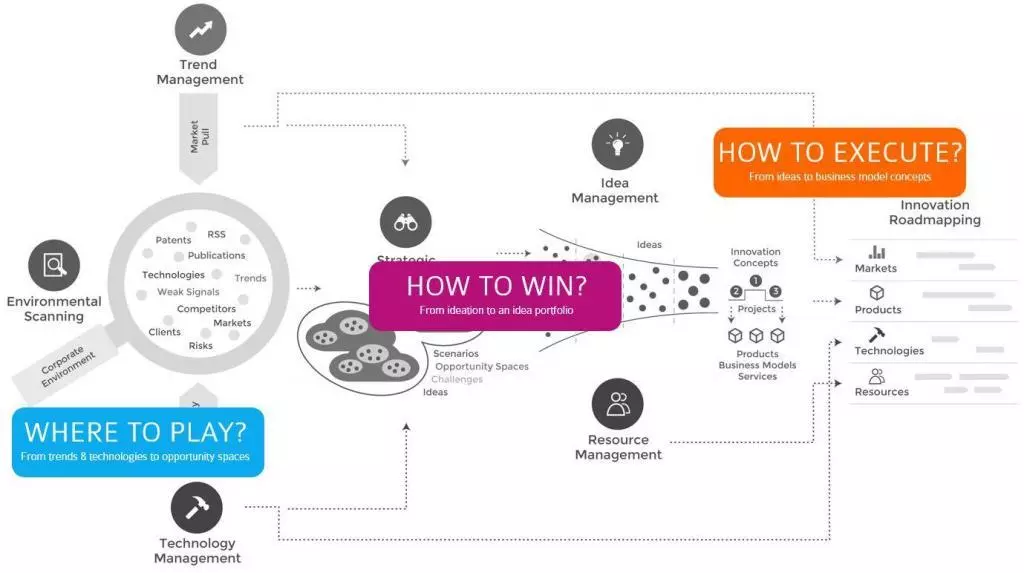Innovation Workshops
After the structural and organizational anchoring of innovation management, it must be filled with life. Therefore, step 3 of our consulting approach deals with the content and methodological elaboration of innovation management. Our innovation approach focuses on three different areas in order to take a holistic (end-to-end) view on innovation management: Where to play? How to win? How to execute?

Where to play focuses on the identification of trends, technologies or startups that influence the business model.
- Which trends can I currently observe and how do they influence my corporate environment?
- Which new technologies and associated patents are of crucial importance for my company?
- How do established companies and newcomers from different industries use these trends and technologies?
- Which startups mix up my industry or could serve as strategic partners for new technologies?
By linking this information, the threats and opportunities of a company can be uncovered and transferred into so-called opportunity spaces (advantageous innovation fields) as part of the corporate strategy.
The How to win section enables targeted idea development and answers the following questions:
- How do I address my defined fields of innovation within the framework of targeted idea campaigns?
- How do I plan and control my idea campaigns and how do I achieve a high level of participation by the relevant idea providers?
- How do I move from individual ideas to a sustainable idea portfolio?
- Which ideas have the potential to achieve the strategic goals that have been set?
Our idea management approach, therefore, does not begin with a simple collection of ideas, but with targeted idea campaigns. Only by linking defined fields of innovation the strategic orientation and development of qualified ideas can be ensured.
How to execute deals with the further development of ideas with high potential into clear business models:
- What are the detailed concepts behind the most promising ideas?
- Which possible business models are suitable for a successful market launch?
- Does the innovation pipeline contain enough products to serve existing and future markets?
- What internal and external skills and resources do I need to invest in to develop future technologies and products?
By visualizing and contextualizing dependencies between markets, products, technologies and resources in an integrated roadmap across all business units, targeted investment decisions can be made for medium to long-term product and technology planning.